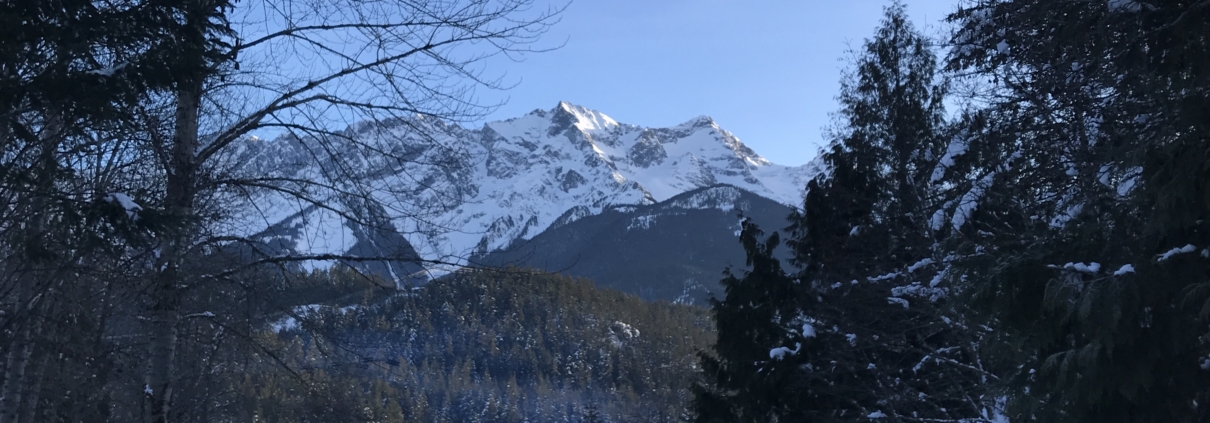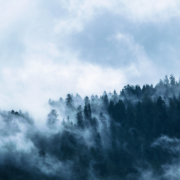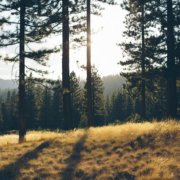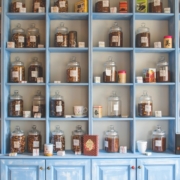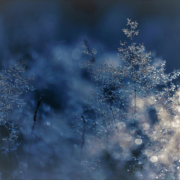February Magic: Imbolc & The Quickening of Spring
Today begins the month of February, the shortest month of the year. Many North American First Nations peoples had a tradition of naming the moons that fell in each month and these names tell us a story about the nature of that time of year. February’s full moon has been called Snow Moon, Big Winter Moon, and Hunger Moon, letting you that February is a cold month and often a lean one too. In most of Canada (where I live) snow covers the ground and the lakes and rivers are still crusted in ice in February. The woodstove must be kept stoked and there is not a crocus or a snowdrop in sight. And yet, it is always in this month that the light begins to wax once again and the days become noticeably longer. It is always in February that the new year quickens and we remember that spring will come again.
A Time Of Purification
The name February comes for the Latin word, februare, meaning “to make pure” and in ancient Rome there were many different festivals and ritual practices that took place during this month related to purification, spiritual sacrifice, and fertility. These included Februalia, a month-long period of prayer and sacrifice, the festival of Parentalia which honoured the ancestors through sacred offerings, and Juno Februa which included rituals of dedication and purification. Most well known though was the festival of Lupercalia which was celebrated mid-month and had its roots in ancient (and rather bloody) pastoral celebrations of fertility. It became an important festival for the great city of Rome and was considered a time of purification and sacrifice. It was later named Februa which means “purging or purification”.
It can be helpful to frame these festivals in light of the fact that February was the final month of the year for the ancient Romans whose new year began in March. In most of the Northern Hemisphere February can be considered a transition month, a time in which winter begins to let go and the promise of spring is reborn. As such it can be a wonderful time in which to create your own rituals of purification and release in honour of the new creative cycle that is to come. Personally, I love to use this time of year as an opportunity to get rid of clutter and gain some clarity around what I value. This often includes very practical rituals such as organizing my filing cabinets and cleaning out my cupboards along with doing inner reflection around what it is I want to dedicate myself to.
A Time of Inner Dedication
This idea of inner dedication is also woven into the spiritual mythology of this season and can be seen in the Christian feast of Candlemas (Feb 2nd) which is also known Feast of the Purification of the Blessed Virgin Mary. In some Christian countries, Candlemas was considered the last feast of the Christmas cycle. This actually makes sense to me as I see the time of Candlemas (Imbolc) as the time when the spark of life that was lit at winter solstice now quickens in order to carry us forwards towards the spring. Candles are used to symbolize the light at this time and one of the ways Candlemas was celebrated in the home was by lighting all of the candles. There were also rituals of consecration done within the church, effectively blessing the candles that would be used in ritual throughout the year. Though I do not identify as Christian I love to work with candle magic at this time and I will often place a new candle on my altar which I will burn through the entire month of February.
Imbolc & The Goddess Brigid
The Celtic cross-quarter festival known as Imbolc was also celebrated at this time (Feb 2nd) and honours the goddess Brigid, a goddess whose names means “exalted one” but whose even more ancient Gaelic name Breo-Saighead means “fiery arrow”. It is said she was born at sunrise to Dagda (god of the earth) and Boann (goddess of fertility). Brigid is the embodiment of the element of fire and she is said to represent the triple flames of inspiration, the hearth, and the forge and she was central to the festival of Imbolc, particularly in Ireland.
The name Imbolc likely comes from an Old Irish root (i mbolc ) that means “in the belly” which is said to refer to the pregnancy of the ewes that occurred at this time, signifying life to come. Another possible meaning for the name is the Old Irish root imb-fholc which meant “cleanse oneself” and references ritual cleansing once again. What we can learn from these names is that the festivities of Imbolc were focused around rituals that honoured the ending of winter (Imbolc as considered the beginning of Spring in the old Irish calendar) and celebrated fertility.
In the home, the hearth fire was central to these rituals and it would often be cleaned out and relit at the time of Imbolc as a way of inviting the blessing of goddess Brigid into the home. Brigid is in this was similar to the Roman goddess Vesta and the
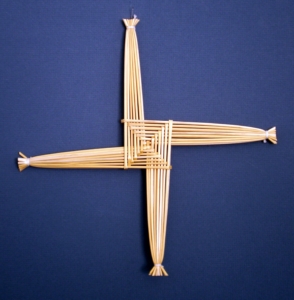
ancient Greek goddess Hestia, goddess of the hearth. In Ireland, it was traditional to make Brigid’s Crosses (see image) at this time and hang them over doors and windows to invite Brigid in and to protect against fire and lightning. These would be left up until the next feast of Imbolc.
As Christianity came to Ireland the goddess Brigid was replaced by St Brigid of Kildare who was said to be have been born to a “pagan” family (circa 450 CE) and was converted to Christianity by Saint Patrick. St Brigid was known for her generosity to the poor and her mystical powers which included healing the sick. She was recognized for her holiness within her own lifetime and was given a plot of land by the king on which she created the monastery of Kildare (from the Old Irish cill dara) which meant the church of the oak tree. Oaks were sacred to the Druids and so in this way a syncretization of pre-Christian and Christian practices occurred. In the inner sanctuary of this church a sacred flame was lit and was tended by the nuns continually, possibly all the way up to the time of the reformation in the 176th century, an amazing feat considering Kildare was a sight of numerous Viking raids.
I visited the town of Kildare last September and visited Kildare Cathedral which was built on the site of St Brigid’s original monastery. There you can see the possible ruins of St Brigid’s fire temple where the flame was tended (along with an impressive round tower which was built to protect the inhabitants from the Viking raiders). All throughout the town, you can find references to St Brigid, her flame and the iconic Brigid’s Crosses.
What Does All This Mean To Me?
My family has been in Canada for about 3-400 years but my people originally came over (uninvited) from Europe and the islands of Scotland, Ireland, and Britain, so personally I have always loved to learn about the pre-Christian celebrations of those peoples. Your family may come from elsewhere and so you may find that learning about the rituals and practices of those places and those peoples will speak to you in a special way. Regardless of my ancestry though I have always been fascinated by the way that early peoples kept up practices of sacred timekeeping, marking the progression of the solar (and lunar) cycles through feast days and rituals that were honored both publicly and privately. Each season and indeed each month of the year has its own unique energy signature and it can be so much fun to tap into that through simple ritual. It is also empowering in my opinion, because what we are really tapping into is the great cycle of creative energy as it expresses itself through the wheel of the year and progression of the seasons, and that is potent energy indeed.
I no longer live in the lands of my ancestors, the lands that shaped their myths, their beliefs, and their practices which means I cannot simply adopt their rituals wholesale. It would not be entirely true to do so, and it would also be impossible as that tradition was not passed down to me unbroken. However, I can take inspiration and learning from what I know of their practices and I can (respectfully) adapt them to my own time and place. I’ll share some of the practices I enjoy for this season of Imbolc and this month of February and I invite you to use them as inspiration for crafting personal rituals that are meaningful to you.
Personal Rituals for This Season of Quickening
As I said at the beginning of this article February is a month of snow where I live which means we are still in the season of winter. As such it is a quiet time and I appreciate the lack of noise and activity since it encourages me to listen in on a deeper level so that I might intuit what feels most true as the new solar year begins to quicken. This quickening is something that is felt within. In the same way that below the melting snow seeds are beginning to awaken there is a creative energy to this season that must be nourished and strengthened in order for it to come to fruition in time. It is personal, not public. And for this reason I love simple and solitary rituals that allow me to tap into that creative energy on a personal level. Some of these include –
- Candle Magic: I always buy myself a new beeswax candle for my altar which I will light at the time of Imbolc and burn through the entire month of February whenever I do my personal sadhana. This candles symbolizes my own creative energy and so I light it at the beginning of each practice of meditation/yoga/prayer/reflective writing and extinguish it when I am done. This is such a simple ritual but it is very powerful and always stokes my creative fire. You can do a similar practice choosing what your own candle symbolizes and what you want to dedicate your energy towards.
- Purification Practices: February can be a powerful time in which to pare away what is non-essential and come back into relationship with what has the most meaning for you. Practices of cleansing and purification can support this and can be done on a multiple levels. This year I am practicing physical cleansing by getting rid of clutter in my home, clarifying my focus and teaching schedule for the year, and practicing sobriety (no sugar, no booze, no intoxicants). I am even going to take three days of “radical sobriety” next week by enjoying a 3 day technology fast. It can feel really good to clean house at this time and the clarity will serve you well the creative energy of spring gets moving in you. Is there an area of your own life that would benefit from some early spring cleansing?
- Blessing Practices: the second half of purification practice is to offer blessings and make things new again. There is an ancient practice of gathering waters from a local spring or well at the dawn of Imbolc and using that water to bless your living spaces, which is lovely, but if you cannot access a local fresh water spring you can at least create your own rituals of blessing and good fortune. Once I have cleaned out my cupboards and living spaces I love to create little charms that I place within them to encourage a specific flow of energy and blessing force. Sometimes these take the form of words written on paper and tucked under an stone or taped inside a door, other times they look like mini altars of specific objects that have symbolic meaning to me. These are my own form of Brigid’s Crosses and I love to make them. I encourage you to have fun with this, bring magic into your living spaces!
- Witnessing: finally, I love to simply witness the land I live upon and see how it is changing in response to the growing light at this time. I observe the way the quality of the snow changes at this time and the waters begin to flow down the mountainsides near my home. I look to see how the cottonwood buds are ripening and I listen for new morning bird song. These practices more then any other help me to align myself with the greater cycles of growth around me. What happens in the land where you live? How does your landscape transition from winter to spring? What does it feel like? What does it evoke in you? These are the questions that can guide you into practice.
If you have read this all the way through I am seriously honoured as I know that attention spans are rapidly shortening in this digital age (and my writing is wordy). I hope that your reading here has provided some inspiration for you as truly that is what this season of late winter /early spring is all about, tending the inner fire of inspiration so that we may bring our personal creative energy into relationship with the creative energy of the world around us. May it be so for you.
